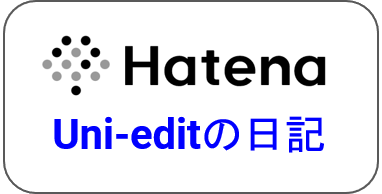難易度:中級
近頃、学術研究論文を読んでいると、必ずといっていいほど頭字語に(訳者注: ここでの頭字語は広義で、狭義の頭字語すなわちアクロニムと、イニシャル語の双方を含みます)遭遇します。頭字語は、論文を読み易くし、新しい概念の新しい用語を生み出すために使用します。けれども、時が経つにつれて、多くの研究者らは、頭字語がコミュニケーションを助けるのではなく妨げているのではないかと懸念しています。
それでは、どんなときに完全な用語の代わりに頭字語を導入すべきでしょう。導入すべきでないのはどんなときでしょう。
完全な用語ではなく、頭字語を用いる
例1 周知の頭字語である場合
"light amplification by stimulated emission of radiation" (励起誘導放射による光増幅)という技法が何かすぐにわかりますか。それでは、"self-contained underwater breathing apparatus" (自給式水中呼吸装置)はどうでしょう。
一部の周知の頭字語は、それらを改めて定義する必要はありません。実際に定義すると混乱を起こすかもしれません。上記の長い説明的な言い方と、日常的に使われる、"laser" (レーザー)や"scuba" (スキューバ)とでは、どちらがわかり易いですか。
良い目安として、職場や研究室、教室以外で、人々の会話の中にその頭字語を聞いたことがあれば、おそらくそれを定義せずに使用することができます。たとえば、分子生物学者でなくてもDNAが何か知っているでしょうし、数学者でなくとも3Dを、国際関係の専門家でなくともUNを知っています。
例2 標準略語および標準頭字語
しかし、周知の頭字語とは何かというと、絶対のコンセンサスはありません。たとえば、有機化学者はDMSOが何かすぐにわかるのに対し、機械技師はEMFを当たり前に理解します。けれども有機化学者は起電力(ENF)を測定したり定量化したりする必要は滅多になく、機械技師は低毒性溶媒のジメチルスルホキシド(DMSO)を扱うことはほとんどありません。したがって、どちらも普遍的な意味で周知の頭字語とはいえません。
投稿先の学術誌が「標準略語のリスト」、「標準略語と頭字語のリスト」などを提供しているかどうかを確認してください。たとえば、Journal of Organic Chemistryに掲載する予定であれば、その雑誌のStandard Abbreviations and Acronyms(標準略語と標準頭字語)を参照して、「DMSO」を定義することなく使用できるかを確認します。
自分と同じ領域の論文の、他の著者らがしていることをみるのも良い方法です。ある頭字語を定義せずに使用している論文が6つ以上あれば、おそらくその頭字語をそのまま使用して問題ありません。それに、それらの著者らはあなたが学会で発表する場合の主要な聴衆でもあるはずです。学会で会って、その頭字語を使用して互いに完全に理解できるでしょう。
用語を定義して、頭字語を用いる
例1 珍しい概念であるか、(読者にとって)おそらくなじみの薄い概念である場合
これは学術論文の執筆において最もよくあるケースであり、あまりによくあるので一部の著者はそれが絶対的なルールであると(誤って)教えられます。もしある頭字語が標準リストにない場合に、特にその頭字語が文章の文法上の主語である場合、自分の論文で初めて使用するときにそれをおそらく定義する必要があります。
- The Profile of Mood States (POMS) is a commonly used measure of psychological distress.
(訳)気分プロフィール検査(POMS: Profile of Mood States)は、心理的苦痛の測定によく使用される検査法である。 - In an earlier paper, an acoustic wave propagator (AWP) was proposed to describe the time-domain evolution of mechanical waves in various media.
(訳)以前のある論文で、音波伝搬体(AWP: acoustic wave propagator)が、さまざまなメディアにおける力学的波動のタイムドメインの進化を示すために提唱された。
論文の読者がその頭字語を知っていると予想されても、いくつかの理由でそれを定義することは有効です。
- 混乱を回避します。その頭字語の意味がその文章の主たる焦点でない場合に、特に当てはまります。
- スペースを節約します。頭字語は、単語数が1語としてカウントされます。さらに頭字語は、スペースが限られることの多い図や表の中での使用に重宝します。
- 知識豊かな読者を引きつけます。時に研究者らは、実際の用語ではなくその頭字語を使用してデータベースを検索します。その頭字語を使用すれば、検索結果にその論文が確実に表れ、上位にランクされます。
例2 自分で頭字語を作成する場合
時には、自分で頭字語を作成したいと思うでしょう。論文の重要な概念、または提唱する新たな概念のために頭字語を生み出すかもしれません。
さらには、結果のセクションで、試験群(たとえば、A群、C群)を比較したいときにもよく頭字語が使用されます。特にスペースが限られる図や表では頭字語は重宝です。
Leukemia recurrence rates in patients treated with imatinib+steroid therapy (I+S) were compared with those of patients treated with imatinib monotherapy (IM), and with the conventional treatment (CT).
(訳)イマチニブ+ステロイド療法(I + S)で治療した患者の白血病再発率を、イマチニブ単独療法(IM)、および従来の療法(CT)で治療した患者の白血病再発率と比較した。
白血病の化学療法に関する文献をみてもこれらの頭字語は見つかりません。しかし、結果のセクションで3つの群を比較するとき、比較の対象をマークするラベルとしてそれらの頭字語を使用すれば、読者はそのデータを理解し易くなります。
完全な用語のみを用いる
例1 1度しか使用しない場合
たとえ頭字語の作成が可能でも、必ずしも使用する必要はありません。論文で1度しか使用しない用語には、頭字語を使う必要はありません。
This paper proposes a novel finite-difference time-domain (FDTD) technique to solve multiphysics problems. In the past, researchers have developed the finite-element time-domain (FETD) and boundary-element time-domain (BETD) numerical methods to find solutions to these equations, but these will not be discussed here.
(訳)本論文は、マルチフィジックス問題を解決するために、新規の有限差分時間領域(FDTD: finite-difference time-domain)法を提唱する。過去に、研究者らはこれらの方程式を解くために有限要素時間領域(FETD: finite-element time-domain)数値解析法と境界線-要素時間領域(BETD: boundary-element time-domain)数値解析法を開発しているが、これらはここでは考察しない。
この場合、 “FETD“と“BETD“はこの論文で二度と用いられないので、それらを定義する必要はありません。
Download Tip Here:  When do I have to define my acronyms?
When do I have to define my acronyms?
Writing Tip 015 - When do I have to define my acronyms?
Difficulty: Intermediate
These days, it’s almost impossible to read an academic paper without encountering acronyms. The intention is to make papers easier to read, and to create new lingo for new concepts. However, as time goes by, more scholars are worrying that acronyms are impeding communication, rather than helping it.
So when should you introduce acronyms to define a full term, and when shouldn’t you?
Use the Acronym without the Full Term
Case #1: “Well-known” Acronyms
Do you immediately understand the technology described by “light amplification by stimulated emission of radiation”? What about "self-contained underwater breathing apparatus”?
Some terms have become so widespread, that it is unnecessary to define them: in fact, defining them might be confusing! Which was easier to understand: the language above, or the everyday words “laser” and “scuba”?
A good rule of thumb is if you have heard an acronym spoken aloud by people outside your workplace, laboratory, or classroom, you can probably use the acronym without defining it. for example, not only molecular biologists know what DNA is, not only mathematicians know what 3D is, and not only international relations experts know what the UN is.
Case #2: Standard Abbreviations and Acronyms
However, there’s no absolute consensus on what constitutes a “well-known” acronym. For example, organic chemists immediately know what DMSO is, while mechanical engineers wouldn’t look twice at EMF. But the former rarely need to measure or quantify electromotive force, and the latter rarely deal with the low-toxicity solvent dimethyl sulfoxide: so it seems unreasonable to say either is “well known” in a universal sense.
Check if your target journal provides a “List of Standard Abbreviations”, “List of Standard Abbreviations and Acronyms”, etc. For example, if you were looking to publish in the Journal of Organic Chemistry, you could consult their Standard Abbreviations and Acronyms and find out that “DMSO” can be used without abbreviation.
Within your field, it is also good practice to see what other authors are doing. If you can find more than five that use an acronym without defining the term, then it is probably safe to do so yourself. Remember, they are also your primary audience: if you met at a conference, and just used the acronym, you would understand each other perfectly.
Define the Term and Use the Acronym
Case #1: Uncommon or Perhaps Unfamiliar Concepts (to your Readers)
This is the most common case in academic writing: it is so common, some writers are (mistakenly) taught it as an absolute rule. If an acronym isn’t in a standard list, you should probably define it the first time you use it in your paper, especially if the acronym is the grammatical subject of the sentence.
The Profile of Mood States (POMS) is a commonly used measure of psychological distress.
In an earlier paper, an acoustic wave propagator (AWP) was proposed to describe the time-domain evolution of mechanical waves in various media.
Even if you expect your readers to know the acronym, it can be useful for several reasons.
- To avoid confusion. This is especially true if the meaning of the acronym is not the main focus of the sentence.
- To save space. An acronym counts as one word for the purpose of word counts. In addition, it is useful in Figures and Tables where space is often limited.
- To attract knowledgeable readers. Sometimes researchers will search databases using the acronym rather than the real term: using the acronym ensures your research will appear and rank highly in their search results.
Case #2: Your Own Acronyms
Sometimes you’ll want to create your own acronyms. You might do this for an important concept to your paper, or a new one you are proposing.
It is also common in the Results section, when you want to compare groups. (e.g. A group, C group). This is fine, especially in tables and figures where space is limited.
Example: Leukemia recurrence rates in patients treated with imatinib+steroid therapy (I+S) were compared with those of patients treated with imatinib monotherapy (IM), and with the conventional treatment (CT).
You won’t find these acronyms in the literature on chemotherapy for leukemia. However, since the Results section is devoted to comparing these three groups, readers can more easily understand your data if you create labels to mark the objects of comparison.
Use the Full Term Only
Case #1: Only Used Once
Even if an acronym is possible, you don’t have to use it. If you use a term for which an acronym is possible only once in a paper, you don’t need to provide an acronym.
This paper proposes a novel finite-difference time-domain (FDTD) technique to solve multiphysics problems. In the past, researchers have developed the finite-element time-domain (FETD) and boundary-element time-domain (BETD) numerical methods to find solutions to these equations, but these will not be discussed here.
In this case, the acronyms “FETD” and “BETD” are not used again in the paper, so it is unnecessary to define them.



